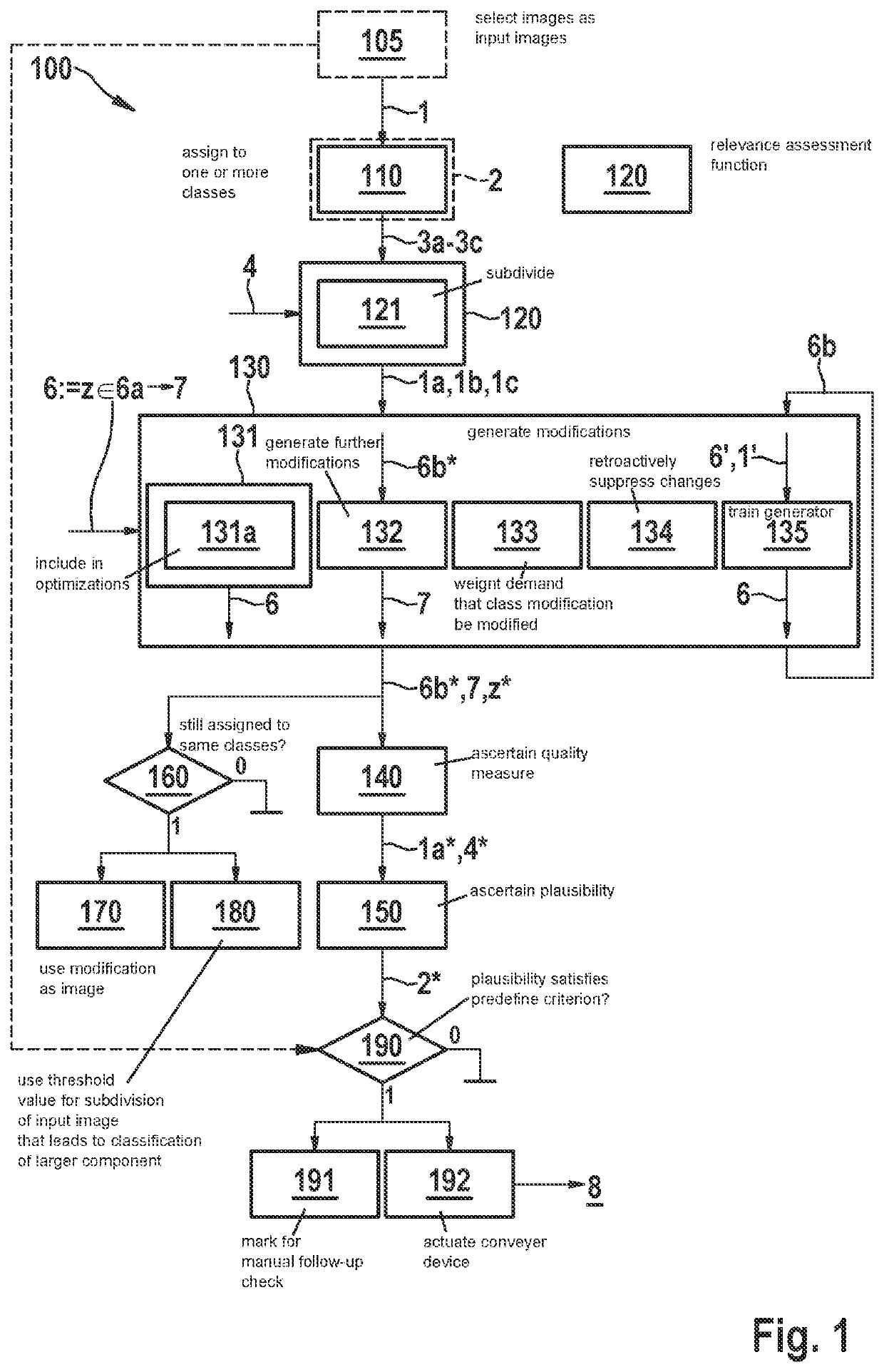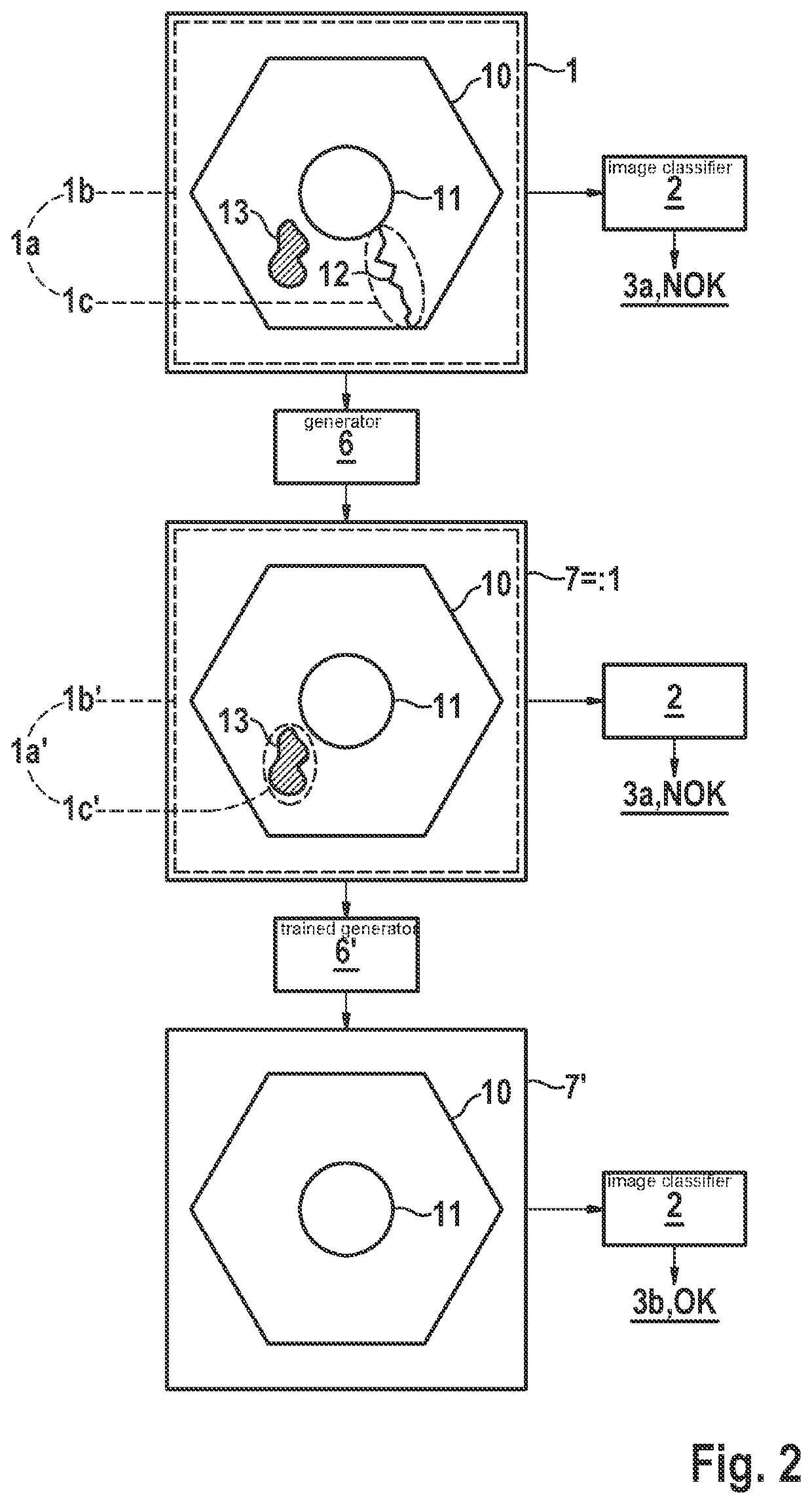Plausibilization of the output of an image classifier having a generator for modified images
a technology of image classifier and generator, applied in image enhancement, image analysis, instruments, etc., can solve the problems of few relevance assessment functions to be calculated with high efficiency, difficult to derive a statement that is helpful for the mentioned optical quality control, and low efficiency, so as to achieve the effect of tightening the decision limit of the image classifier and increasing the hit ra
- Summary
- Abstract
- Description
- Claims
- Application Information
AI Technical Summary
Benefits of technology
Problems solved by technology
Method used
Image
Examples
Embodiment Construction
[0053]FIG. 1 is a schematic flow chart of an exemplary embodiment of method 100 for plausibilizing the output of an image classifier 2, which assigns an input image 1 to one or more class(es) 3a-3c of a predefined classification. For instance, according to step 105, in particular images of mass-produced, nominally identical products are able to be selected as input images 1. Image classifier 2 may then be trainable to subdivide input images 1 into classes 3a-3c of a predefined classification that represent a quality assessment of the respective product.
[0054]In step 110, an assignment to one or more class(es) 3a-3c is ascertained for input image 1 with the aid of image classifier 2. In step 120, a relevance assessment function 4 is used to ascertain a spatially resolved relevance assessment 1a of input image 1. This relevance assessment 1a indicates which components 1b, 1c of input image 1 have contributed to what degree to the assignment to one or more class(es) 3a-3c.
[0055]In ste...
PUM
 Login to View More
Login to View More Abstract
Description
Claims
Application Information
 Login to View More
Login to View More - R&D
- Intellectual Property
- Life Sciences
- Materials
- Tech Scout
- Unparalleled Data Quality
- Higher Quality Content
- 60% Fewer Hallucinations
Browse by: Latest US Patents, China's latest patents, Technical Efficacy Thesaurus, Application Domain, Technology Topic, Popular Technical Reports.
© 2025 PatSnap. All rights reserved.Legal|Privacy policy|Modern Slavery Act Transparency Statement|Sitemap|About US| Contact US: help@patsnap.com


